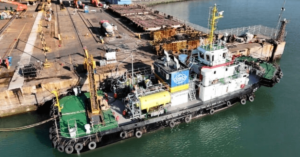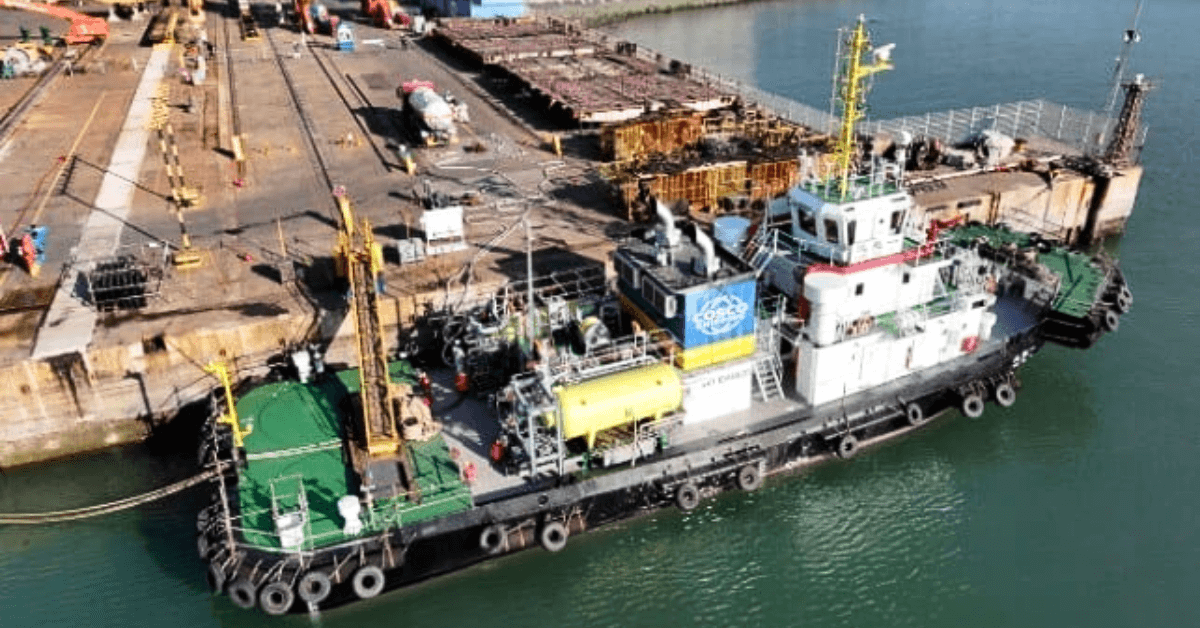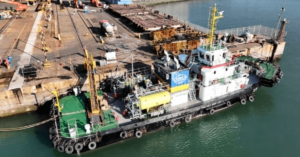
2 Greek Shipping Companies Fined $4.5 Million For Dumping Oily Waste In U.S. Waters
December 27, 2024
Adani’s Mundra Port Welcomes Its First LNG Container Ship
December 27, 2024

On December 24, China conducted its first ammonia bunkering operation at the COSCO Shipping Heavy Industries shipyard in Dalian.
The tugboat Yuan Tuo Yi, powered by ammonia, was fueled during this operation, which is part of a project launched in 2022 to develop ammonia-powered vessels.
The operation, carried out by Sinopec COSCO Shipping Marine Fuel Supply Company, involved a truck-to-ship method and lasted two hours.
However, the amount of ammonia loaded was not disclosed. Extensive planning, including research on safety protocols, ammonia fueling processes, and emergency response plans, ensured the operation was completed safely.
The 38-meter-long Yuan Tuo Yi is powered by the CRRC Dachai 12V240HDFA ammonia-diesel dual-fuel engine and features a fuel supply system developed by Weihai Heavy Industry Technology. It is equipped with two C-type liquid ammonia storage tanks.
Construction of the tug began in January 2024, following an extensive research program. The project earned Approval in Principle from both the China Classification Society (CCS) and ABS for the tug’s design and ammonia fuel systems. CCS also certified the tug’s components after rigorous testing.
Ammonia is seen as a promising alternative marine fuel because it produces no greenhouse gases like carbon dioxide when burned, releasing only nitrogen and water.
However, handling ammonia is challenging due to its toxicity and the risks of leaks or explosions. To address this, workers underwent specialised training, and simulated drills were conducted to prepare for emergencies like ammonia leaks, fires, and first aid during the fueling process.
This operation comes after similar advancements worldwide. Earlier in 2024, Singapore conducted the world’s first ammonia bunkering, fueling a vessel converted by Fortescue.
Japan’s NYK Line also fueled a converted tugboat with ammonia, and U.S.-based Amogy demonstrated an ammonia-powered tug with its innovative technology.
Efforts are underway to develop large commercial ships equipped with ammonia-ready or ammonia dual-fuel engines. Infrastructure for ammonia bunkering is also being developed to support the widespread adoption of this clean energy source.
Officials have reported major progress in developing ammonia engines, achieving an energy substitution rate of over 90% and a thermal efficiency of over 40% in medium-speed engines.
In earlier tests, a single-cylinder engine reached 208kW, with ammonia providing 85% of the energy, reducing carbon emissions by 80%.
Reference: Port News
Source: Maritime Shipping News


